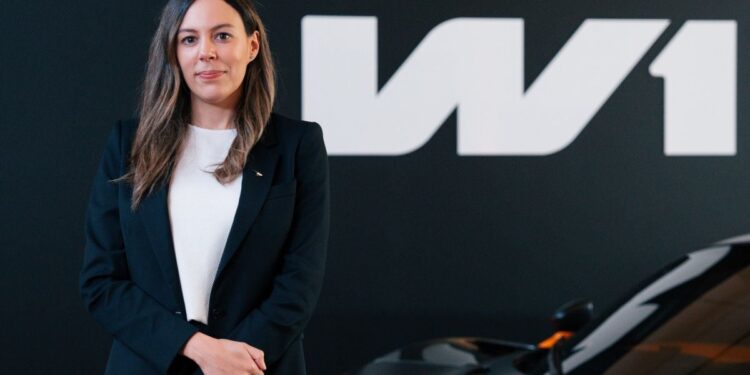Last year McLaren Automotive revealed the next instalment in its ‘1’ hypercar series, and it will be the most powerful road-legal model the hallowed British auto brand has ever made.
The McLaren W1 follows the legendary F1 and the modern P1 in serving as the absolute pinnacle of the brand’s lineup, boasting an all-new 4.0-litre twin-turbo flat-plane crank V8 that revs all the way to 9200rpm and is said to be good for 683kW of power and 900Nm of torque on its own.
It’s teamed with a motorsport-sourced plug-in hybrid system that adds 255kW and 440Nm for stratospheric combined outputs of 938kW/1340Nm, making it the most powerful road car McLaren has ever produced, sent to the rear wheels via an eight-speed dual-clutch automatic transmission.
CarExpert can save you thousands on a new car. Click here to get a great deal.
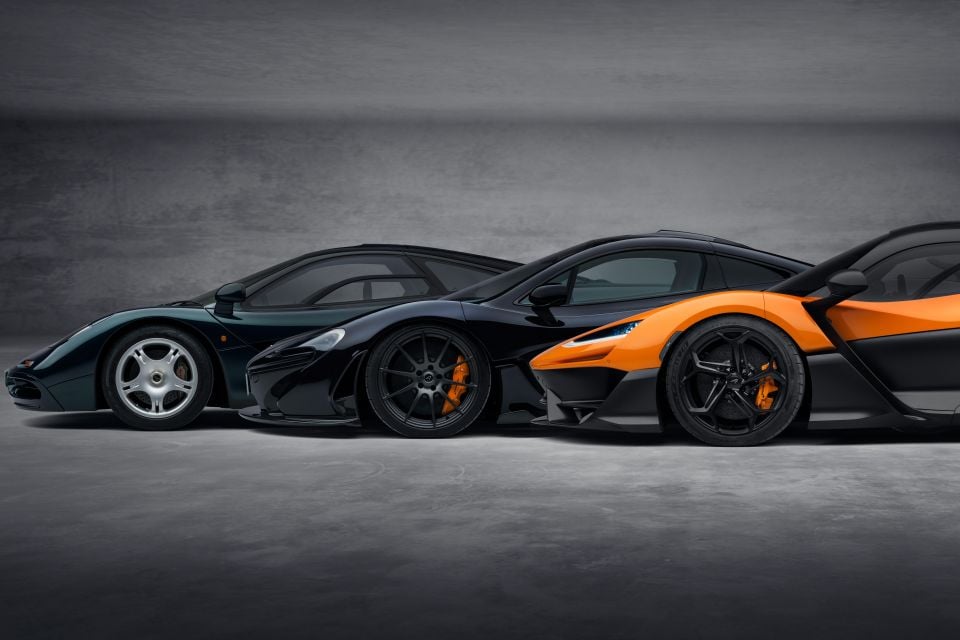
McLaren claims the W1 can dash from 0-100km/h in just 2.7 seconds and from 0-200km/h in just 5.8 seconds. It says the W1 will keep pulling all the way to an electronically limited top speed of 350km/h, and is quicker to 300km/h than the Speedtail, as well as being three seconds faster around Italy’s Nardo circuit.
Just 399 examples will be produced, all of which are already accounted for despite a starting price of roughly £2 million (A$4.11m).
We sat down with W1 project manager, Heather Fitch, to get a better insight into how this masterpiece of design and engineering came to be.
Were you part of the initial vision for the W1? What was the vision for it at the very beginning?
Great question. So I’ve been [working] on the car about four years, but the actual journey of the car probably started five years ago. When we make any McLaren, we start to set out what the key priorities are, what the key requirements of the next McLaren are.
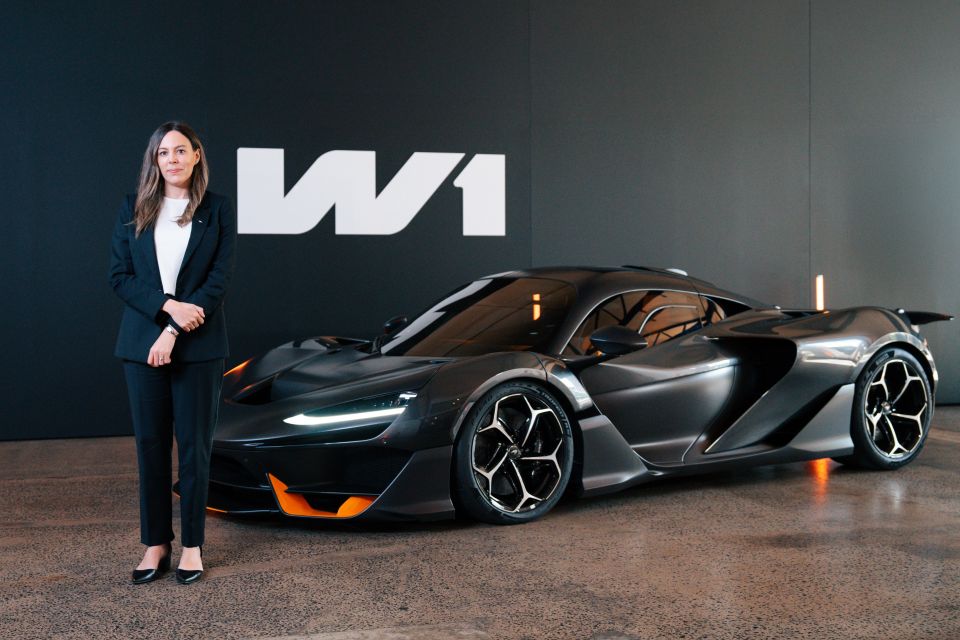
And for a car like this, the performance figures that we have, it had to have 1000kg of downforce. When you have numbers like this that are kind of crazy – they’re really big numbers – you realise pretty soon that we need a brand-new engine for this.
It has to be a brand-new V8 if we want that kind of ability, and it needs to be a hybrid engine. So we already ticked the box for hybrid and we need to package this extreme performance.
You start to then shape the car to those numbers. So when we create that shape, we realised early on we needed a brand-new tub, a brand-new monocoque. And that’s where it begins.
That’s really where you start your design journey. You have this idea, this target, in your mind, and those kind of key requirements start to shape and form – what the car needs to be four or five years later. So, that’s really kind of how it all begins.
So as part of that process, did you have performance benchmarks in mind, such as power output and 0-200km/h acceleration?
You’re absolutely right. When we design a car, we need to give ourselves some really clear targets internally. So we’ve got many engineers in the company working on this vehicle, and we have to make sure we’re clear in communicating the vision.
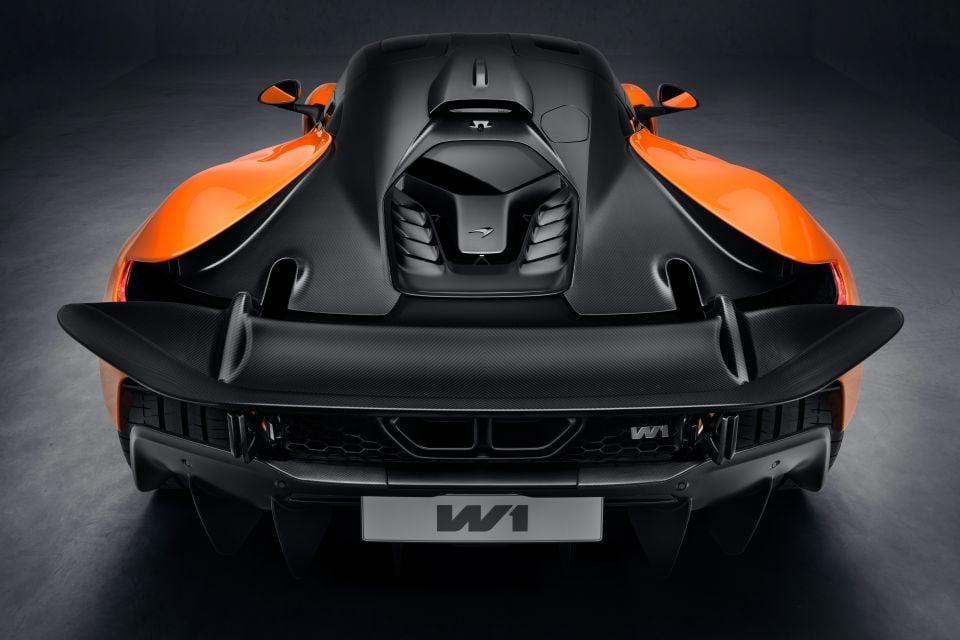
You know, what are we trying to achieve? What’s the positioning this car? How do customers feel when they drive it? One of the first things that I get to do in my job, when I work on a car, is describe that feeling and what we need to achieve.
And we have to then communicate that vision to the whole organisation, so everyone who’s doing the engine, the tub, everything down to the clips and the brackets that hold those things together, they need to understand we’re creating something that needs to achieve the very pinnacle of what we can do.
So it’s not just any old bracket – it’s made of aluminium, and it’s lightweight and maybe attaches four different components in one bracket, and it just does so much more. We give ourselves maybe a bit more budget to spend, versus some of our other products, which gives us access to more exotic materials and perhaps longer process times to really hand build and craft these cars.
So by communicating that vision from the beginning, we can then create a very clear objective, and create a car at the end that’s exactly what we need to achieve. So we do have to, as the program progresses, really list out some of those numbers and those targets from the beginning.
Are any of those numbers and targets customer-driven? For example, do you have requests from previous clients that say they’re willing to put money down for a new hypercar as long as it does this or that, or are they driven more by the competition?
A blend, it’s definitely a mixture. So we have our own kind of ideas where we want to take our brand, what meets the core of our DNA, and what we’d like to achieve as a business going into the future. And there are some things customers don’t know that we can do.
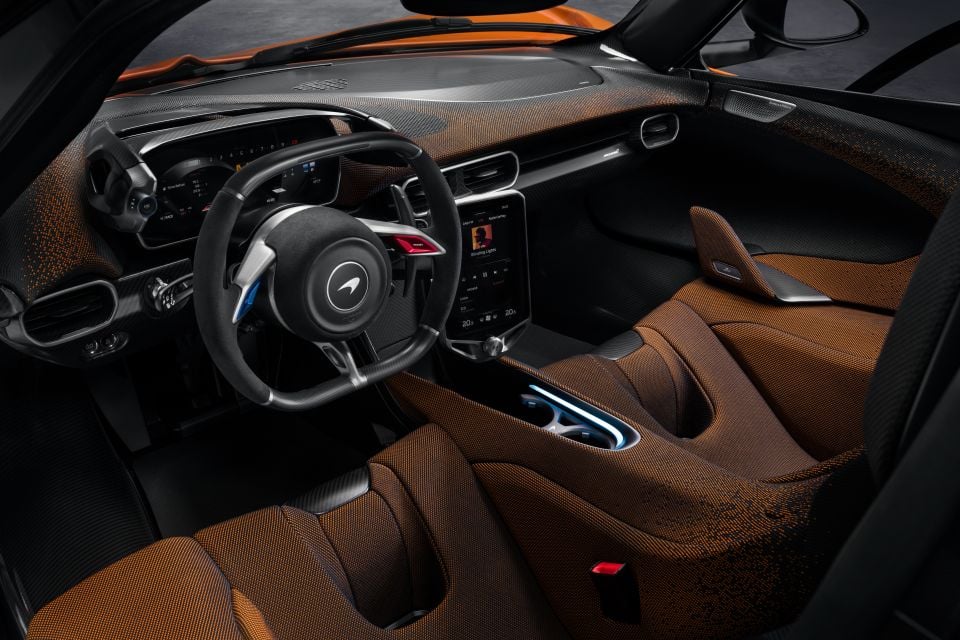
So we’re constantly creating, innovating and telling them the next best thing, and they love it. But we have a fantastic relationship with our customers, and in my role I’m very lucky to meet so many of them. We are quite a small company, and because of that we get to build up really personal relationships.
And they tell us what they love about the McLarens, and I love hearing how they use them. I met a customer recently who drove to a racetrack in Europe. I think his daughter was driving one of his other McLarens, and they drove together then drove back home again afterwards. You know, the customer who takes their P1 on road trips at weekends.
So I get to hear these stories, and I get to hear what’s important to them, what they want because they’re on their road trips, when they need to put their weekend bags in there. They need to put helmets in there. And these become really core, important parts of what we create in our vehicles.
So even though we have our brand’s desires and objectives and what we want to create as a business, we are constantly listening to our customers and talking to them. And it’s a great part of my job, I love talking to them. We want to make sure we’ve always got customers in our minds and creating something that they’re going to love driving in the future.
Is that something that you would say sets McLaren apart from some of your competitors? Like Mercedes-AMG and Ferrari, you’ve got strong links to your F1 division, but is everyday practicality something that McLaren really prides itself on and will continue to offer moving forward?
Yeah, I think each car we make is different. Each car will have their own unique objectives and attributes. You know, in Artura, it’s quite different to a 750S in terms of the hybrid powertrain setup, the capabilities that the two cars have, their lap time performance – so each car has their own subtle differences.
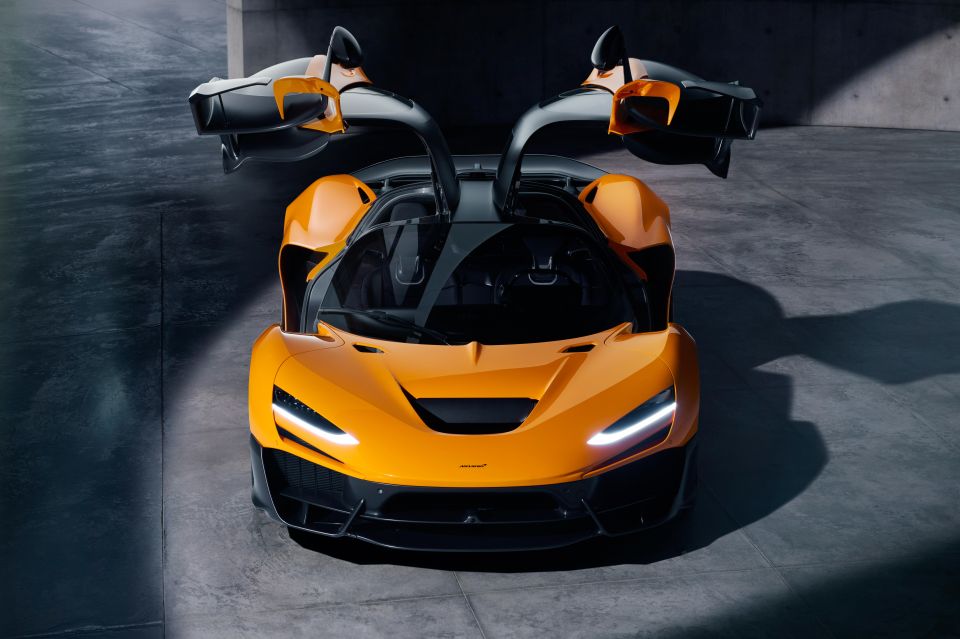
We knew from very early on with the W1 it had to be a car that was great on both road and track. That was like rule number one – it had to be great at both. And it’s very easy to make a track car because you just save a bit of weight so you make the car a bit faster, you measure the lap times and it gets a little bit more uncomfortable, but it’s really hard to make a car that does the two, is great at both [track and road].
You know, we have the P1 and its performance envelope, which is also great on road and track. What we’ve done with W1 is extended the capability to be even better on track and even better on road, and putting that in one package is really difficult, really challenging.
That’s why we have a car that sort of transforms in front of you. The wings deploy, the doors open. You know that it’s a very different car to other cars we’ve made in the past. And it’s because it is an important part of we want people to do, to use and enjoy our cars every single day.
But it comes down to what’s the objective. What do we want from each of our vehicles? And I certainly believe it will be part of all McLarens to come, but some to different degrees. We will have outright track performance vehicles – there are some that are only track-legal that we’ve done in the past, but for W1 it was really important to be great at both of those thing.
Obviously the McLaren ‘1’ hypercars have been pioneers of technology, much of which has filtered down into your other products. So can we expect anything from the W1 – whether it’s the hybrid tech, the new V8, or the active aero – to flow into other future McLaren models?
Yeah, great question! I think we’ve certainly learned so much from making this car and the capabilities, and the new ways of thinking that we brought into W1 gives us really exciting opportunities for other products in the future.
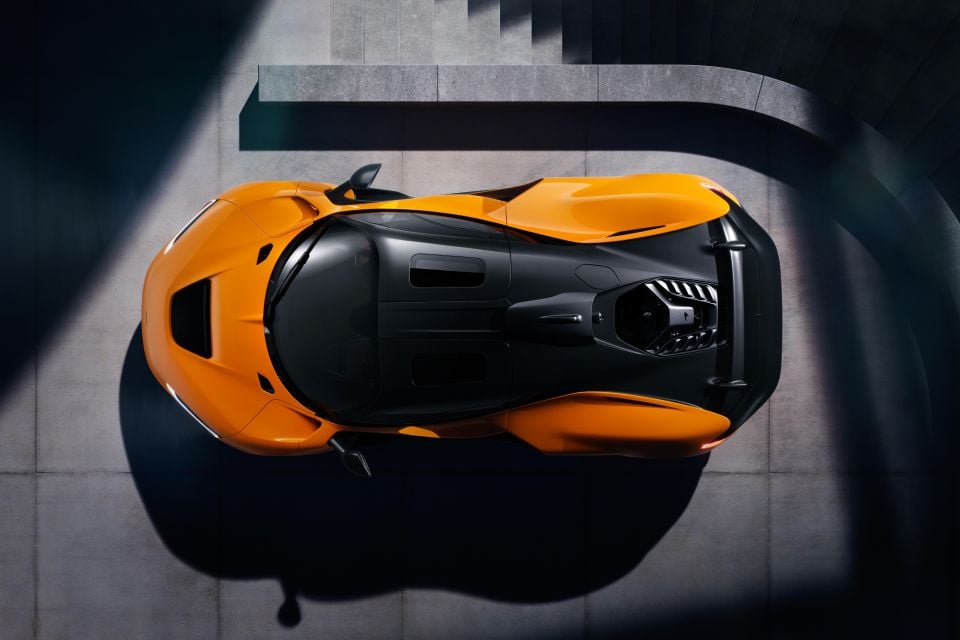
So for example, we use a lot of VR at McLaren – so virtual reality headsets where you can sit in just the seats that are positioned just like a W1 or another car. We can 3D-print parts around you. Put the headset on and you’re in the car. Or we can change it to be a different car, change the interior slightly, and we can assess things really, really quickly.
And there are some learnings about how we’ve made this car which we can translate to other products. You know, we can still use that VR technology onto anything else that we create. We can refine and introduce.
For example, we used a very advanced wind tunnel model to create this vehicle – you can see from the surfaces it’s quite a complex aero car – but what we learned from how we developed the aero model we can use that same learning. That same technology analysis we can use on any of our cars.
So I think it gives us so much more in terms of opportunities for how to make even greater cars in future, or refine the ones that we have today.
The doors are quite a theatrical element, but the way the wing extends out Transformer-style is a masterpiece. How much time and money did it take to design and engineer that component alone?
I definitely think it’s a masterpiece as well – we’re pretty pleased with it. I can’t get into specifics exactly on time and money, but I like that you try to ask that.
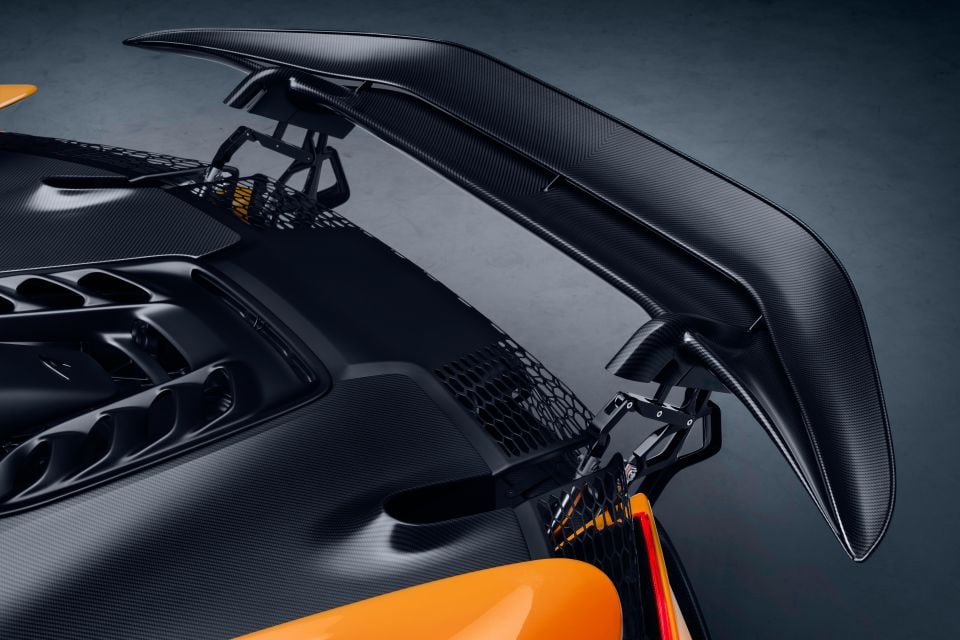
Obviously it’s such an incredible core part of how everything comes together in this vehicle. We do have that full kind of aero package, the aero work starting at the front, working underneath the car with the ground-effect aero, the diffuser – one of the biggest diffusers we’ve ever made. And it expands just behind the headrest – it starts to open up and get bigger and bigger.
The engine actually shifts out the way to get that diffuser volume to open, and all of that is linking up to that rear wing and getting that rear wing to work. When you look at Formula 1, and you look at where Formula 1 positions those rear wings, they’re quite far back off the body.
We’ve often joked a few times ‘why has no-one done this before?’ – it’s exactly where you should put a rear wing on a car, right at the back of the body. So you know, the technologies and the innovations just in that one space alone – some of it is just common-sense engineering, but it’s incredibly complex the amount of work that’s gone into it.
We’ve got, for example, the first time we’ve ever put e-motors onto a rear wing. Traditionally, it’s been hydraulic on our previous products. These are e-motors, which allow much faster control and movement, which means when you’re on a rac track or you’re cornering, we can change that wing position really, really quickly.
And it can adapt too – if you’re braking, the wing is up. If you’re in a straight line, you’re into DRS. So it’s reacting really quickly to conditions. We’ve not done those things before, so it created some new challenges. It created some really fun challenges for a team to come up with, and obviously as you’d expect a lot of hours and a lot of work and effort to really refine every element of the detail that goes into that.
From the shape of the surfaces and making sure design really liked it when it was done. The metal mechanism, the way that that’s created, to me looks like artwork. You know, it’s really a beautiful piece of engineering, so we wanted to make sure it was visually really great to look at, but also extremely functional as well.
And obviously, how well that mechanism stows into the rear of the vehicle – there are so many elements to think about, so yeah I think the team has done a pretty good job on it!
Every W1 customer goes through the MSO process so they can really tailor their car to their own tastes, but is there a specific program that allows W1 customers – including Australians – to bring their cars to a racetrack, like you do with buyers of Sports and Super Series models?
Yeah, I think there’s a few ways I can explain that. So for W1 you’re exactly right, we’ve got a great team of McLaren Special Operations [people] who sit with every customer to make the car really their own. There are so many options that it can be quite overwhelming, so the team do a really good job of guiding people through that process, and they can come back for a few sessions.
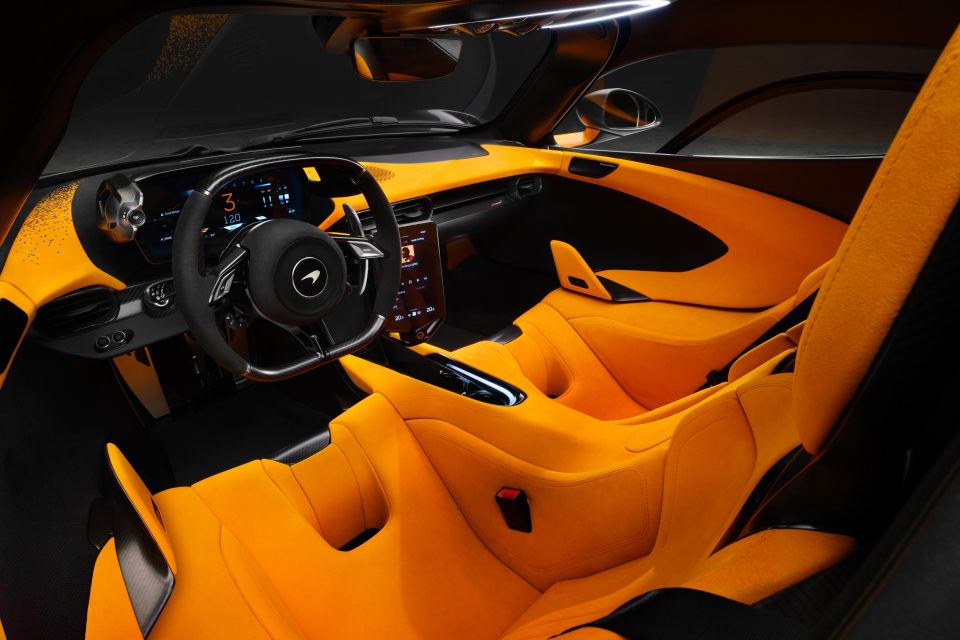
Sometimes because they can’t quite decide, they go away, think about it, come back to us, and it can take quite a long period of time. So we work with them over that period of time to get to know them, talk to them more, and make sure that they’re enjoying their experience.
We want to build up that really great personal relationship with them, and make them feel like they’re part of the family, so we make sure that their purchase process is, you know, better than we’ve ever done at McLaren before and they really enjoy it.
That’s one part of it. Obviously within that, we invite them to the McLaren Technology Centre. They’re more involved with our brand and, with cars at this level, they’re much closer to the product. But in terms of all of our cars we, for example, run something called Pure McLaren Experience days.
We just had one. I think it was two weeks ago at Silverstone, where we invite all our customers to drive their own cars on track. We have other cars, so if they don’t want to bring their own they can drive one of ours.
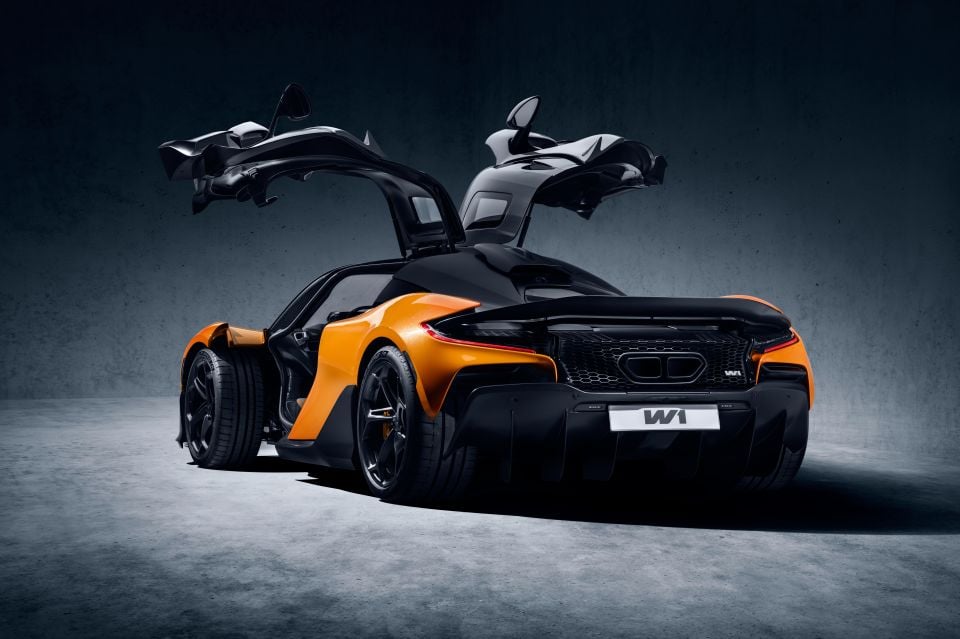
We also had the largest collection of Solus GTs on track at one time, so we ran a race car session, where all the race cars are out on track together. So it’s your 720 GT3Xs, we had Solus GTs out, Artura Trophys, and then we had a road session where people had their road car Sennas, Arturas, and they’re just going out lapping and lapping.
There was one chap queuing at the gate at 7:00am in the morning – it was really early. He was first one out, and he kept going back every session. And we have those options and opportunities throughout the year available for customers to just do what our McLarens do best, and they run them on track and have a great time.
So yeah, it was great to see everyone a couple of weeks ago and for us to connect with our customers again. I saw some people I’ve seen a few times now, and it’s great to catch up with them and see what they’ve been up to.
MORE: McLaren’s most powerful car yet bears a familiar Aussie name
